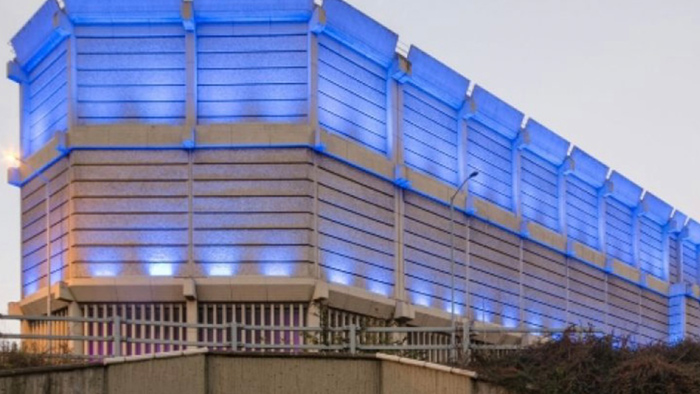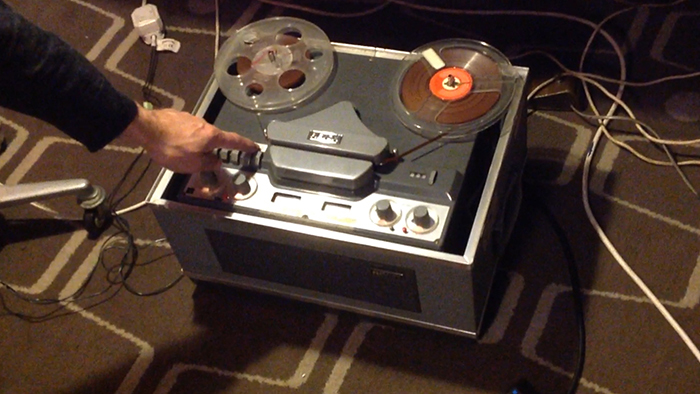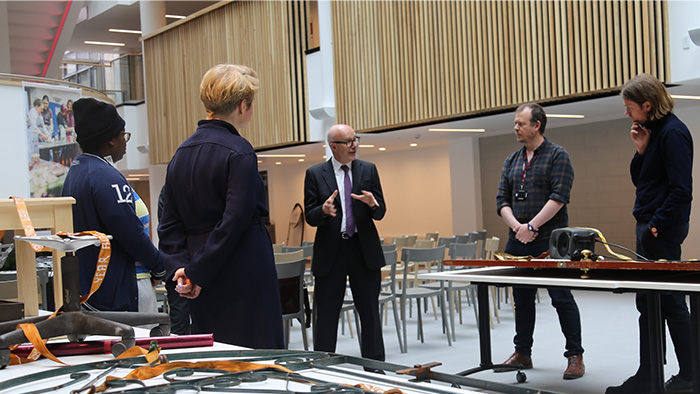Spanning electronic music, technology and contemporary art, a series of commissions for No Bounds Festival has been guest curated this year by Amy Carter Gordon from Sheffield Hallam’s Culture and Creativity Research Institute.
No Bounds is an independent festival in Sheffield and this new partnership will showcase art created by Sheffield Hallam artist-researchers that addresses social, economic and political inequalities.
The festival will take place in venues across Sheffield, and the Hallam commissions will be showcased at SADACCA (Sheffield and District African Caribbean Community Association) and Moore Street electrical substation on both Saturday 15 and Sunday 16 October. Both exhibitions are free and no ticket for the festival is required for entry.
Amy Carter Gordon, innovation manager at Hallam’s Culture and Creativity Research Institute, said: “Joining Hallam this year, I saw compelling, beautiful and thought-provoking art that addresses major societal challenges such as climate change, the effects of pollution on our bodies and the impact of big data on our lives. I immediately wanted to find ways of sharing this work created by our world-leading artist-researchers, with members of the public, students and partners in the city to provoke discussion and to demonstrate the applied nature of our research.
“No Bounds Festival provides an ideal platform and partnership from which to explore these ideas and the venues that I have chosen, I hope, will encourage people from across all our communities to feel part of what we do at Hallam and join the conversation. I am indebted to our partners at both National Grid and SADACCA for their great support in making the exhibitions happen.”
At this year’s festival, Carter Gordon shares three installations from leading artists from Sheffield Hallam University; Professor David Cotterrell, Professor Lise Autogena and Noemie Soula.
A collaborative installation by David Cotterrell and Shelly Knotts, God’s Eye View IV (Conflict), will be showcased at SADACCA. David Cotterrell is Research Professor of Fine Art and Director of the Culture and Creativity Research Institute at Sheffield Hallam University.
God’s Eye View IV (Conflict), is an immersive projected artwork on an impressive 5Mx5M dome hemisphere that returns to the nostalgic playground of artificial life to explore again, the way in which we accept the representation of our actions, and the way that we attempt to anthropomorphise the visualisation of our data.
Aspects of the visualisation influence an algorithmically generated sound installation by Shelly Knotts. The synthesised soundscape moves with its own rhythm, at times converging with patterns in the visual simulation.
Lise Autogena and Joshua Portway provide a world exclusive for their new installation 196.85 ml/h also featured at SADACCA. Lise is a Danish born artist and Professor of cross-disciplinary art at Sheffield Hallam University.
The room is filling with oil at the same rate that the oceans are rising. A computer controlled laboratory pump produces a precisely calibrated drip of oil which forms a puddle on the floor at the rate of 196.85 millilitres per hour; at this rate the level of oil in the room will rise at 3.6mm per year, the current rate that the oceans are rising.
The oil drips at a rate of almost one drop per second, a quiet and insistent rhythm that is meditative and yet relentless, reminiscent of hourglasses and of taps dripping in the night.
Noemie Soula’s work, Mythical Living Data, will feature at Moore Street Substation. This is a rare opportunity for members of the public to visit the iconic, brutalist building and provides a highly atmospheric location for the exhibition. Noemie Soula is a French artist and a research assistant at Sheffield Hallam’s Lab4Living.
Mythical Living Data: an inquiry into the future of data storage is a research-driven and interdisciplinary project, interweaving life sciences, storytelling, and craft. Mixing legend with science by examining the concept of chimaeras, the project investigates how our polluted environment can interact and alter our life code, the DNA. It also explores the blurring lines between emerging biotechnology, genetic-engineering, and what is defined as human and non-human.
Concentrating on three main contaminants – microplastics, cadmium (heavy metal) and uranium (radioactive waste) – six speculative scenarios are presented during the exhibition.



